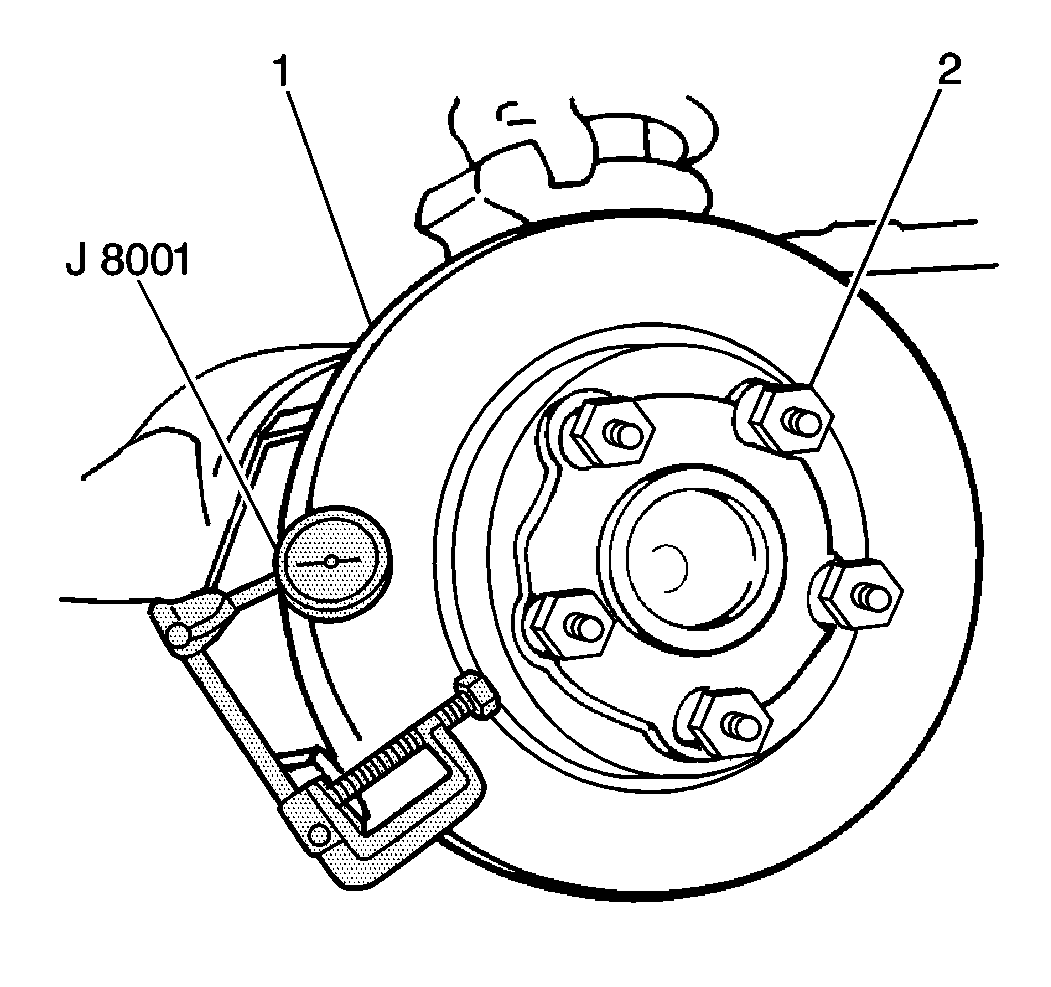Removal Procedure
Tools Required
J 8001 Dial Indicator Set
NOTICE: Any time the brake rotor is separated from the wheel bearing flange, clean any rust or foreign material from the mating surfaces of the wheel bearing flange and the rotor. Failure to do so can result in increased lateral runout of the rotor and brake pulsation.
- Clean the rotor surface (1).
- Reinstall the wheel nuts (2) in order to retain the rotor.
- Fasten the J 8001 to the steering knuckle for front or to the brake mounting flange on the rear axle for rear so that the indicator button contacts the rotor surface about 13 mm (0.5 in) from the rotor edge.
- Set the J 8001 to zero.
- Turn the rotor one complete revolution. Inspect the runout indicated on the dial. If the TIR exceeds 0.15 mm (0.006 in), refinish or replace the rotor.

Notice: Use the correct fastener in the correct location. Replacement fasteners must be the correct part number for that application. Fasteners requiring replacement or fasteners requiring the use of thread locking compound or sealant are identified in the service procedure. Do not use paints, lubricants, or corrosion inhibitors on fasteners or fastener joint surfaces unless specified. These coatings affect fastener torque and joint clamping force and may damage the fastener. Use the correct tightening sequence and specifications when installing fasteners in order to avoid damage to parts and systems.
Tighten
Tighten the wheel nuts in a star pattern to 140 N·m (100 lb ft).
In some cases, excessive lateral runout of the rotor may be improved by indexing the rotor on the hub, one or two bolt positions from the original position. Indexing the rotor requires removal and installation of the front brake caliper. For removal of the front and rear brake rotor, refer to Brake Rotor Replacement .
If the lateral runout cannot be corrected by indexing the front rotor, inspect the hub and the front wheel bearing for excessive lateral runout or looseness. If the hub lateral runout exceeds 0.040 mm (0.015 in), replace the hub and bearing. If lateral runout of the hub and bearing is within specifications, refinish or replace the rotor as necessary.
If the lateral runout cannot be corrected by indexing the rear rotor, inspect the rear axle shaft flange for excessive lateral runout. If the axle flange lateral runout exceeds 0.040 mm (0.015 in), replace the axle shaft. If lateral runout of the axle flange hub is within specifications, refinish or replace the rotor as necessary.
